 Search by Keyword
Sign Up Below for our MONTHLY BEATLES TRIVIA QUIZ!
|
"EVERYBODY'S TRYING TO BE MY BABY"
(Carl Perkins)
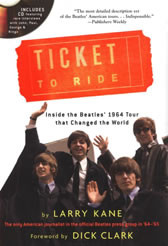 Just like Ringo, George Harrison had his share of fans. And also like Ringo, George wasn't an accomplished songwriter as of 1964. His very first composition, "Don't Bother Me," earned a place on their second album "With The Beatles" in November of 1963 (as well as the historic American album "Meet The Beatles!"), but he described himself as "so lazy" in an interview with journalist Larry Kane in his book "Ticket To Ride" when asked about future compositions. He had written a song entitled "You Know What To Do," the demo of which can now be found on the "Anthology 1" album, but it was dropped from consideration for their next album "Beatles For Sale." Just like Ringo, George Harrison had his share of fans. And also like Ringo, George wasn't an accomplished songwriter as of 1964. His very first composition, "Don't Bother Me," earned a place on their second album "With The Beatles" in November of 1963 (as well as the historic American album "Meet The Beatles!"), but he described himself as "so lazy" in an interview with journalist Larry Kane in his book "Ticket To Ride" when asked about future compositions. He had written a song entitled "You Know What To Do," the demo of which can now be found on the "Anthology 1" album, but it was dropped from consideration for their next album "Beatles For Sale."
 Being under pressure to fulfill their recording deadline to release a new Beatles album by the end of the year, as well as to include a song to feature George as lead vocalist, John and Paul dismissed the idea of writing a song for him as they had done on their last album (see "I'm Happy Just To Dance With You"). Instead, George opted to choose a cover song that he liked to sing. This ended up being a no-brainer. Being under pressure to fulfill their recording deadline to release a new Beatles album by the end of the year, as well as to include a song to feature George as lead vocalist, John and Paul dismissed the idea of writing a song for him as they had done on their last album (see "I'm Happy Just To Dance With You"). Instead, George opted to choose a cover song that he liked to sing. This ended up being a no-brainer.
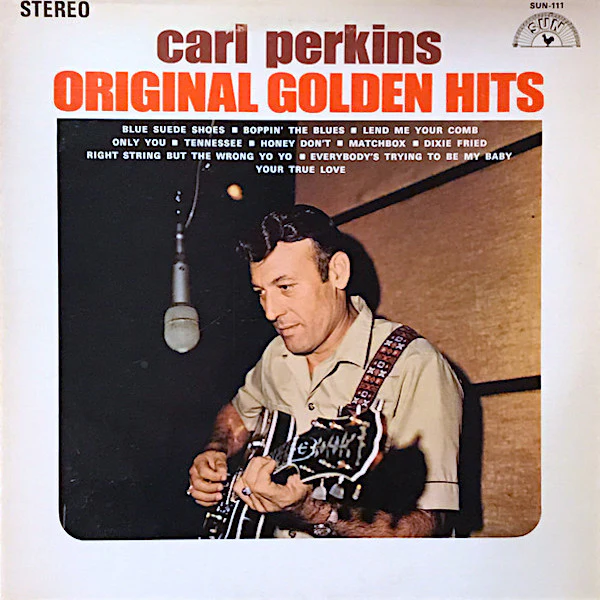 Beginning right from the infancy of the group, The Beatles performed songs by their American guitar hero Carl Perkins. They ended up including twelve of his songs in their ever-growing set lists, three of which were sung by George. One of these songs was the energetic "Everybody's Trying To Be My Baby," which was a true "spotlight" song for George during their 1961 and 1962 performances, especially during their long gigs in Hamburg, Germany. It was an obvious choice, which ended up as the coveted closing track of their December 1964 British and American albums. Beginning right from the infancy of the group, The Beatles performed songs by their American guitar hero Carl Perkins. They ended up including twelve of his songs in their ever-growing set lists, three of which were sung by George. One of these songs was the energetic "Everybody's Trying To Be My Baby," which was a true "spotlight" song for George during their 1961 and 1962 performances, especially during their long gigs in Hamburg, Germany. It was an obvious choice, which ended up as the coveted closing track of their December 1964 British and American albums.
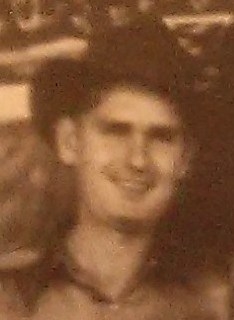
Rex Griffin
Songwriting History
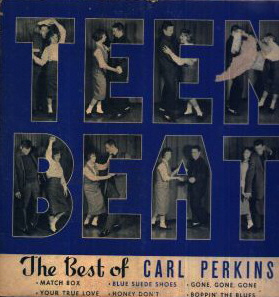 Although the songwriter for "Everybody's Trying To Be My Baby" is listed as Carl Perkins, the song actually goes back a couple decades earlier than many think. Country musician Rex Griffin wrote and recorded a song by the same name in 1936 which Carl Perkins adapted and recorded for his Sun Records album "Teen Beat." Although the songwriter for "Everybody's Trying To Be My Baby" is listed as Carl Perkins, the song actually goes back a couple decades earlier than many think. Country musician Rex Griffin wrote and recorded a song by the same name in 1936 which Carl Perkins adapted and recorded for his Sun Records album "Teen Beat."
Alsie "Rex" Griffin was a highly influential country singer / songwriter born on August 12th, 1912 in Gadsden, Alabama. Originally a harmonica player, he started playing guitar adopting the style of Jimmy Rogers and persued a career with the group The Smokey Mountaineers after he moved to Birmingham, Alabama.
 After performing for radio stations in the early 1930's, Rex signed with Decca Records in 1935 and recorded his own original composition "Everybody's Trying To Be My Baby" in 1936. His biggest hit came the following year, a sad song entitled "The Last Letter" which appeared to be the reading of a suicide note. While this song garnished him some fame and cover versions, Decca dropped him from the label in 1939 when his sales began to diminish. "Everybody's Trying To Be My Baby," however, continued to be covered by various other artists, such as Roy Newman and Jimmy Short. After performing for radio stations in the early 1930's, Rex signed with Decca Records in 1935 and recorded his own original composition "Everybody's Trying To Be My Baby" in 1936. His biggest hit came the following year, a sad song entitled "The Last Letter" which appeared to be the reading of a suicide note. While this song garnished him some fame and cover versions, Decca dropped him from the label in 1939 when his sales began to diminish. "Everybody's Trying To Be My Baby," however, continued to be covered by various other artists, such as Roy Newman and Jimmy Short.
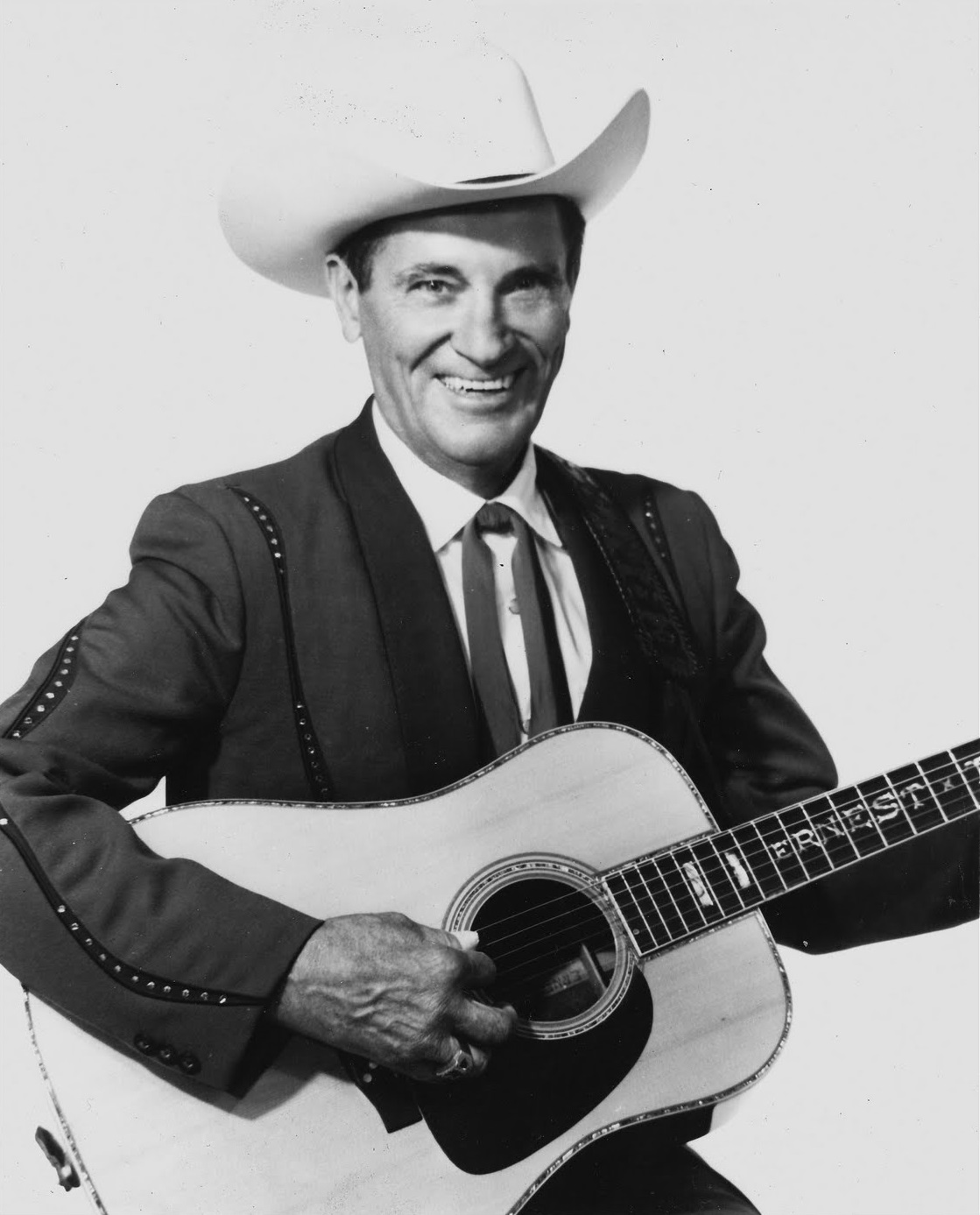 He then performed with different bands and recorded for assorted record labels until illness set in and he decided to retire as a performer in the late '40s. Rex Griffin then moved to Dallas, Texas and found work as a songwriter, penning songs for Ray Price, Ernest Tubb, Red Foley and Eddie Arnold. He contracted tuberculosis in the mid '50s and died on October 11th, 1959 in New Orleans. He then performed with different bands and recorded for assorted record labels until illness set in and he decided to retire as a performer in the late '40s. Rex Griffin then moved to Dallas, Texas and found work as a songwriter, penning songs for Ray Price, Ernest Tubb, Red Foley and Eddie Arnold. He contracted tuberculosis in the mid '50s and died on October 11th, 1959 in New Orleans.
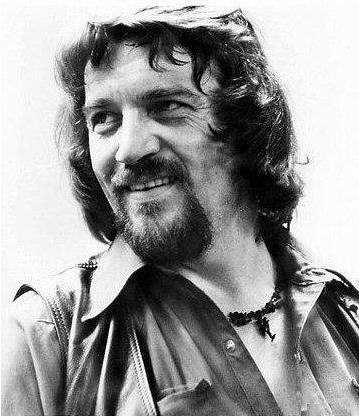 Although his recordings were mostly forgotten as the years went on (due to them pre-dating the 33 rpm LP format), many country musicians recorded his songs throughout the years. Artists such as Willie Nelson, Waylon Jennings, Merle Haggard and Hank Thompson recorded cover versions of his songs, not to mention the adaptation done by Carl Perkins which ended up being performed and recorded by The Beatles. Rex Griffin was inducted into the Nashville Songwriters Hall Of Fame in 1970. Although his recordings were mostly forgotten as the years went on (due to them pre-dating the 33 rpm LP format), many country musicians recorded his songs throughout the years. Artists such as Willie Nelson, Waylon Jennings, Merle Haggard and Hank Thompson recorded cover versions of his songs, not to mention the adaptation done by Carl Perkins which ended up being performed and recorded by The Beatles. Rex Griffin was inducted into the Nashville Songwriters Hall Of Fame in 1970.
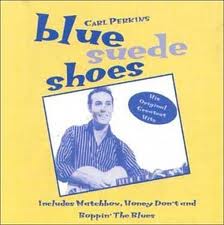 After Carl Perkins had a near fatal automobile accident (see "Honey Don't"), Sam Philips of Sun Records ushered the recovering musician into the studio to record some more tracks for upcoming releases. Hot on the success of "Blue Suede Shoes," Carl Perkins recorded six songs in mid-April of 1956, including "Everybody's Trying To Be My Baby." After Carl Perkins had a near fatal automobile accident (see "Honey Don't"), Sam Philips of Sun Records ushered the recovering musician into the studio to record some more tracks for upcoming releases. Hot on the success of "Blue Suede Shoes," Carl Perkins recorded six songs in mid-April of 1956, including "Everybody's Trying To Be My Baby."
It was not unlike Carl Perkins to adapt older songs into new compositions, as he was about to do in 1957 with an old blues tune entitled "Matchbox." As for Rex Griffin's country song, he changed the melody and some of the lyrics which thereby altered the overall theme of the song. Rex Griffin's original song highlights chasing women and drinking moonshine, while Carl Perkins hinted at the plentiful amount of groupies surrounding the rock and roll lifestyle he was beginning to experience. Particular differences in the lyrics include "They took a little honey from a bee, dressed it up and called it me," which Carl Perkins changed to "took some honey from a tree," making a lot less sense (unless he meant "sap"). Also, the original had "fifteen women" knocking at his door, while Carl Perkins changed it to "nineteen women." Interestingly, in the wake of Beatlemania, Harrison improved it to "fifty women"!
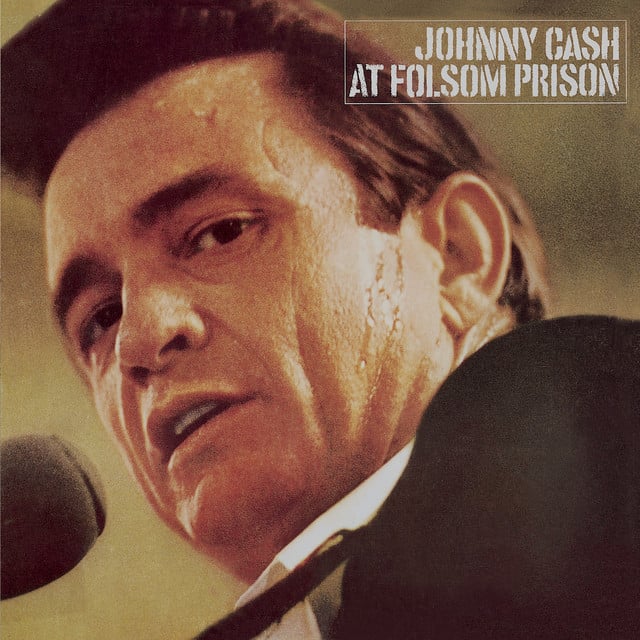 Carl Perkins continued to achieve many successes throughout his career, such as writing the 1968 #1 country hit "Daddy Sang Bass" as recorded by Johnny Cash as well as Glen Campbell and The Statler Brothers. He played for about ten years with Johnny Cash, playing lead guitar on Johnny Cash's #1 country hit "A Boy Named Sue." He even appeared on the Johnny Cash Show playing "Matchbox" with Derek And The Dominoes (featuring admirer Eric Clapton). Carl Perkins continued to achieve many successes throughout his career, such as writing the 1968 #1 country hit "Daddy Sang Bass" as recorded by Johnny Cash as well as Glen Campbell and The Statler Brothers. He played for about ten years with Johnny Cash, playing lead guitar on Johnny Cash's #1 country hit "A Boy Named Sue." He even appeared on the Johnny Cash Show playing "Matchbox" with Derek And The Dominoes (featuring admirer Eric Clapton).
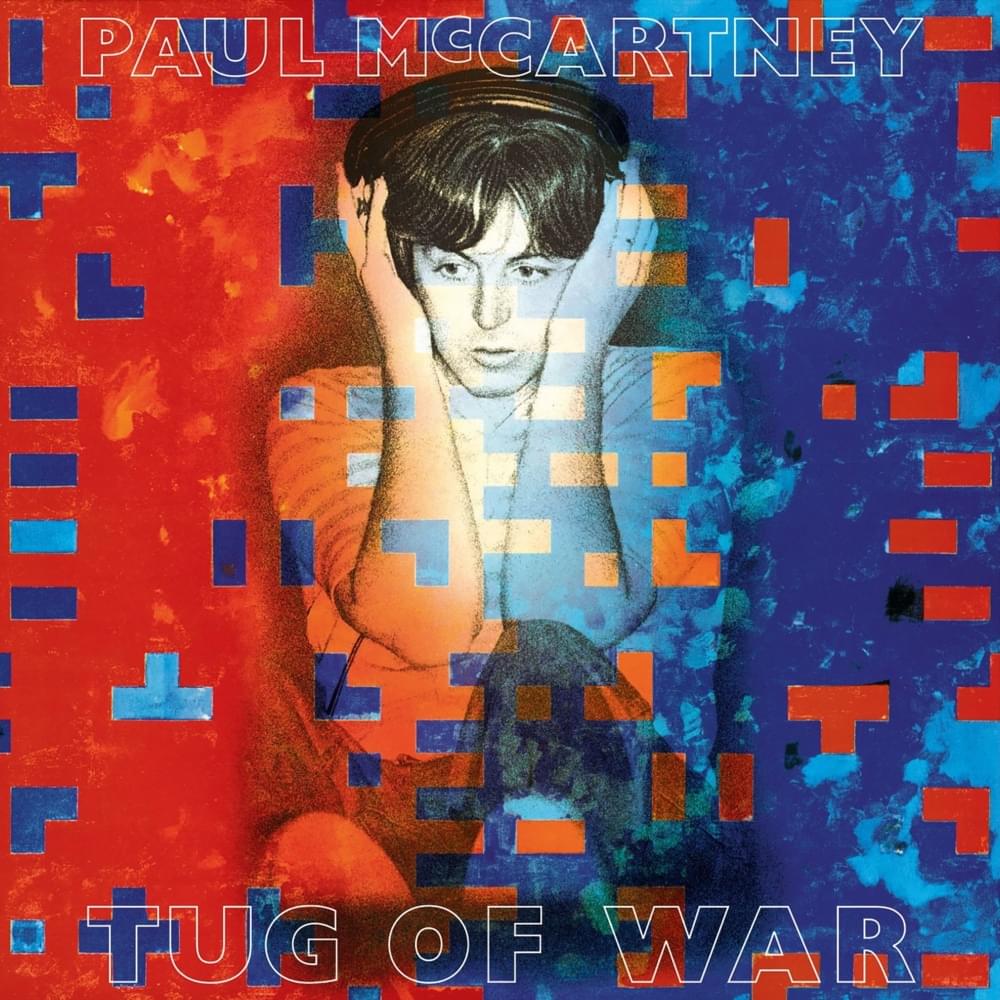 Highlights of his career in the '80s include the song "Get It" which was a duet he performed with Paul McCartney in 1981 that ended up on his number one 1982 album "Tug Of War." He also took part in a television special in 1985 entitled "Blue Suede Shoes: A Rockabilly Session" which featured an all-star jam including Eric Clapton, George Harrison and Ringo Starr. This special eventually saw an album and video release in 2006. Highlights of his career in the '80s include the song "Get It" which was a duet he performed with Paul McCartney in 1981 that ended up on his number one 1982 album "Tug Of War." He also took part in a television special in 1985 entitled "Blue Suede Shoes: A Rockabilly Session" which featured an all-star jam including Eric Clapton, George Harrison and Ringo Starr. This special eventually saw an album and video release in 2006.
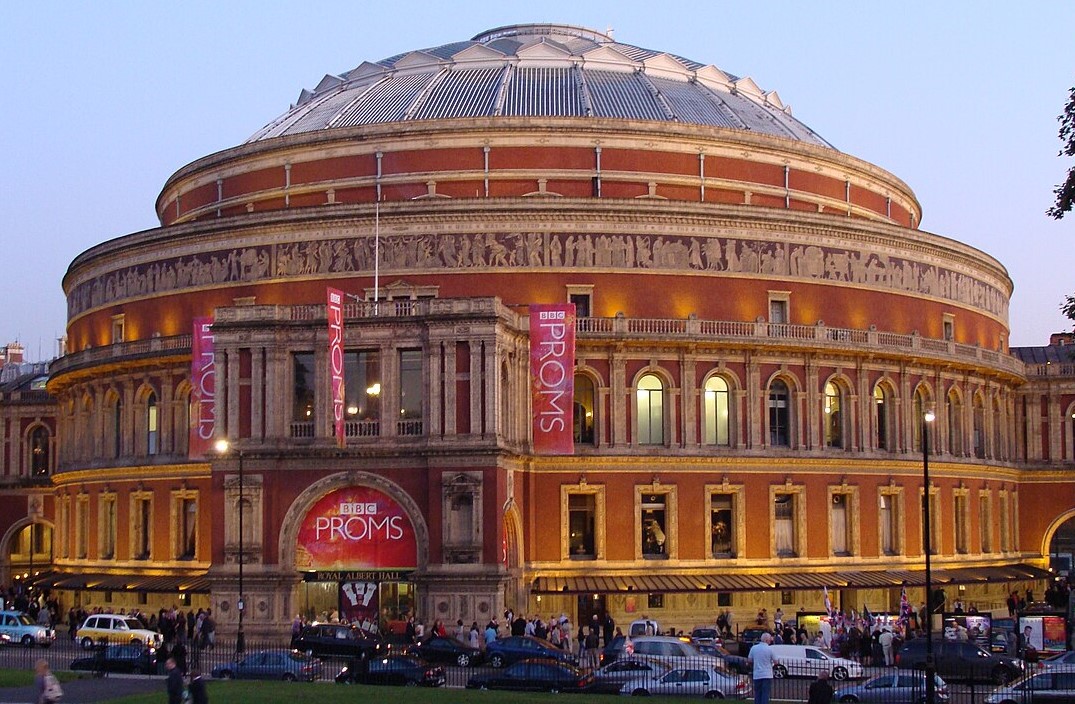 His last major concert was on September 15th, 1997, at the Royal Albert Hall for the charity concert "Music For Montserrat." Four months later, Carl Parkins passed away at the age of 65 on January 19th, 1998, in Jackson Tennessee after suffering multiple strokes and a bout with throat cancer. In tribute to his idol, George Harrison played Carl Perkins' song "Your True Love" on acoustic guitar at his funeral on January 24th, 1998. Among Carl Perkins' accomplishments was his induction into the Rock And Roll, Rockabilly, and Nashville Songwriters halls of fame. He also was a recipient of a Grammy Hall Of Fame Award. His last major concert was on September 15th, 1997, at the Royal Albert Hall for the charity concert "Music For Montserrat." Four months later, Carl Parkins passed away at the age of 65 on January 19th, 1998, in Jackson Tennessee after suffering multiple strokes and a bout with throat cancer. In tribute to his idol, George Harrison played Carl Perkins' song "Your True Love" on acoustic guitar at his funeral on January 24th, 1998. Among Carl Perkins' accomplishments was his induction into the Rock And Roll, Rockabilly, and Nashville Songwriters halls of fame. He also was a recipient of a Grammy Hall Of Fame Award.
 British "Beatles For Sale" album
|
Recording History
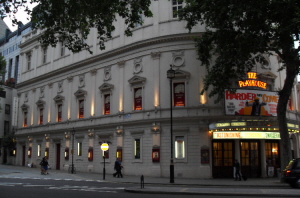 The first time The Beatles brought "Everybody's Trying To Be My Baby" to a recording studio was on May 24th, 1963 for the first edition of a new BBC radio show entitled "Pop Go The Beatles." The recording took place in Studio Two of Aeolian Hall in London on that day between 2 and 6 pm and was produced by Terry Henebery, this show airing on June 4th, 1963 between 5 and 5:29 pm. They recorded the song again for the BBC on March 31st, 1964 at The Playhouse Theatre in London between 7 and 10:30 pm (immediately following the filming of the concert scene for their movie "A Hard Day's Night") for broadcast on the popular radio show "Saturday Club," which was produced by Jimmy Grant and Bernie Andrews and broadcast on April 4th, 1964 between 10 am and 12 noon. The first time The Beatles brought "Everybody's Trying To Be My Baby" to a recording studio was on May 24th, 1963 for the first edition of a new BBC radio show entitled "Pop Go The Beatles." The recording took place in Studio Two of Aeolian Hall in London on that day between 2 and 6 pm and was produced by Terry Henebery, this show airing on June 4th, 1963 between 5 and 5:29 pm. They recorded the song again for the BBC on March 31st, 1964 at The Playhouse Theatre in London between 7 and 10:30 pm (immediately following the filming of the concert scene for their movie "A Hard Day's Night") for broadcast on the popular radio show "Saturday Club," which was produced by Jimmy Grant and Bernie Andrews and broadcast on April 4th, 1964 between 10 am and 12 noon.
 With the deadline for their British "Beatles For Sale" album quickly approaching, The Beatles designated October 18th, 1964 (a Sunday off) for a full day marathon session for recording. They entered EMI Studio Two at 2:30 pm for what turned out to be a nine hour recording session completing eight songs. With such a tight deadline, five of these tracks wound up being cover songs The Beatles had been performing for years and could therefore crank out very quickly. With the deadline for their British "Beatles For Sale" album quickly approaching, The Beatles designated October 18th, 1964 (a Sunday off) for a full day marathon session for recording. They entered EMI Studio Two at 2:30 pm for what turned out to be a nine hour recording session completing eight songs. With such a tight deadline, five of these tracks wound up being cover songs The Beatles had been performing for years and could therefore crank out very quickly.
 Much work was needed for the first five songs completed on this day and, as it was getting very late, they knew they had to step things up. Adding to this, George Harrison in particular was not appearing to be having a good day. "He seemed to be distracted," stated Geoff Emerick who was the 2nd engineer on this session, "like he had something else on his mind, and I couldn't help but think that he must have been frustrated with the level of his playing that afternoon." Geoff Emerick goes on to relate in his book "Here, There and Everywhere" that George had just been pouting about not being asked to do the solo on the previous song, "I'll Follow The Sun," even going into the control room to loudly complain to producer George Martin, "You know, I'd like to do the solo on this one. I am supposed to be the lead guitarist in this band, after all." When he did supply the solo, nobody appeared happy with the result. Something was needed to lift the tension. Much work was needed for the first five songs completed on this day and, as it was getting very late, they knew they had to step things up. Adding to this, George Harrison in particular was not appearing to be having a good day. "He seemed to be distracted," stated Geoff Emerick who was the 2nd engineer on this session, "like he had something else on his mind, and I couldn't help but think that he must have been frustrated with the level of his playing that afternoon." Geoff Emerick goes on to relate in his book "Here, There and Everywhere" that George had just been pouting about not being asked to do the solo on the previous song, "I'll Follow The Sun," even going into the control room to loudly complain to producer George Martin, "You know, I'd like to do the solo on this one. I am supposed to be the lead guitarist in this band, after all." When he did supply the solo, nobody appeared happy with the result. Something was needed to lift the tension.
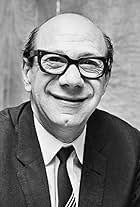 Geoff Emerick continues: "After their tea break - interrupted briefly by a short visit from an annoyingly ebullient Dick James (The Beatles music publisher) - the session seemed to start coasting downhill. They had gotten all the hard work behind them and now had to knock off three more songs before it got too late, because they were due up in Scotland the next day to resume touring. In essence, the rest of the session was a live performance, very much like their debut album. First, a rejuvenated George Harrison redeemed himself with an excellent rendition of 'Everybody's Trying To Be My Baby.' Not only did he sing it with enthusiasm, but he played guitar confidently and well. Even his solo, performed live, was flawless." Geoff Emerick continues: "After their tea break - interrupted briefly by a short visit from an annoyingly ebullient Dick James (The Beatles music publisher) - the session seemed to start coasting downhill. They had gotten all the hard work behind them and now had to knock off three more songs before it got too late, because they were due up in Scotland the next day to resume touring. In essence, the rest of the session was a live performance, very much like their debut album. First, a rejuvenated George Harrison redeemed himself with an excellent rendition of 'Everybody's Trying To Be My Baby.' Not only did he sing it with enthusiasm, but he played guitar confidently and well. Even his solo, performed live, was flawless."
 Only one take of this song was needed, although it wasn't entirely a live performance. Ringo overdubbed a tambourine part which is heard throughout the song and George double-tracked his vocals during the last eight measures of each verse. "The most notable aspect," as explained by Mark Lewisohn in his book "The Beatles Recording Sessions," "was the vast amount of STEED (single tape echo and echo delay) plastered over George's vocal." Mark Lewisohn also goes on to explain how the rest of the instruments were picked up by George's microphone and therefore, since STEED was applied during the performance and not during mixing, the band also has a degree of this effect as well. Only one take of this song was needed, although it wasn't entirely a live performance. Ringo overdubbed a tambourine part which is heard throughout the song and George double-tracked his vocals during the last eight measures of each verse. "The most notable aspect," as explained by Mark Lewisohn in his book "The Beatles Recording Sessions," "was the vast amount of STEED (single tape echo and echo delay) plastered over George's vocal." Mark Lewisohn also goes on to explain how the rest of the instruments were picked up by George's microphone and therefore, since STEED was applied during the performance and not during mixing, the band also has a degree of this effect as well.
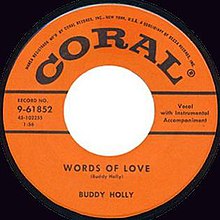 The song probably took all of 15 minutes to fully record, which is estimated to have been somewhere between 10:30 and 11 pm. After this, they fully recorded two more complete recordings, Chuck Berry's "Rock And Roll Music" (with John using the same echo effect) and Buddy Holly's "Words Of Love." They then called it a night at 11:30 and they were off to Scotland the next day. The song probably took all of 15 minutes to fully record, which is estimated to have been somewhere between 10:30 and 11 pm. After this, they fully recorded two more complete recordings, Chuck Berry's "Rock And Roll Music" (with John using the same echo effect) and Buddy Holly's "Words Of Love." They then called it a night at 11:30 and they were off to Scotland the next day.
The mono mix of the song was done in Room 65 at EMI on October 21st, 1964, by George Martin and engineers Norman Smith and Ron Pender. The stereo mix was created in the control room of EMI Studio Two on November 4th, 1964 by Martin and Smith along with 2nd engineer Mike Stone.
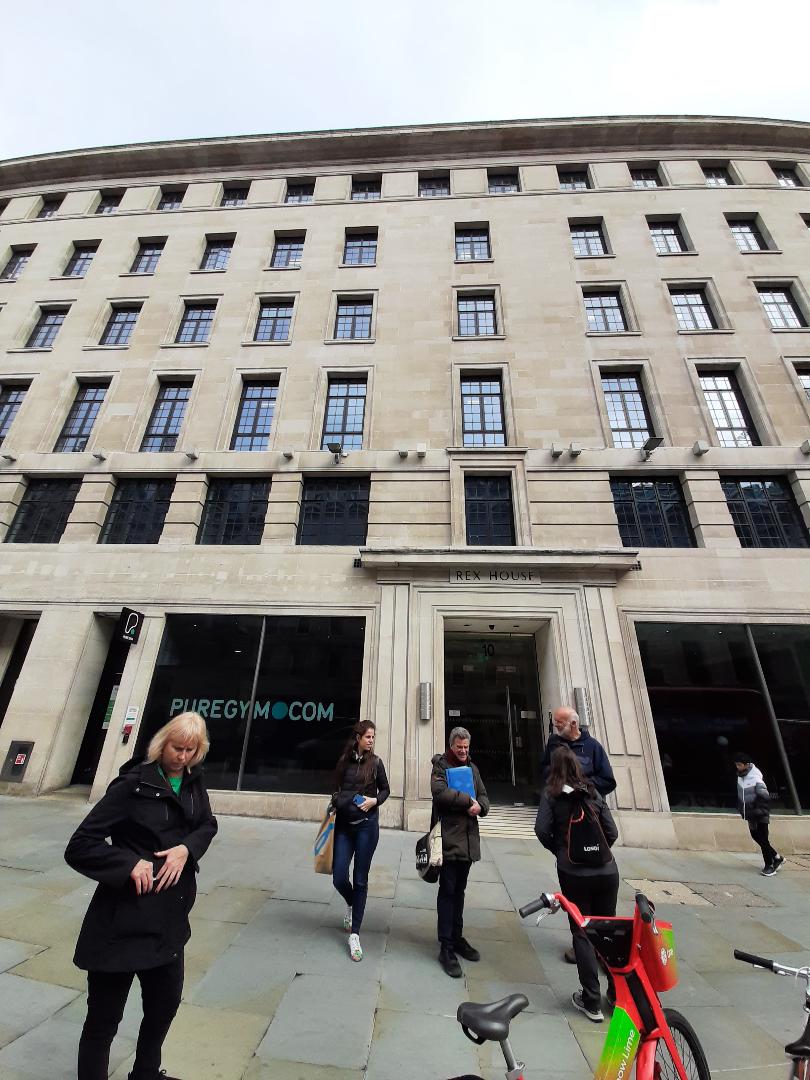 The Beatles recorded the song twice more for BBC radio, the first being on November 17th, 1964 at The Playhouse Theatre in London between 7:30 and 11:30 pm for the radio show "Top Gear," which was broadcast on November 26th, 1964 between 10 and 12 pm, eight days before the "Beatles For Sale" album was released in Britain. This recording, which was produced by Bernie Andrews, was aired again on the ever popular "Saturday Club" radio show on December 26th, 1964. Interestingly, during an interview segment on this broadcast, George commented about the song, "I didn't write it, although it is conceited!" The final BBC recording of the song occurred on May 26th, 1965 in Studio One of BBC Piccadilly Studios in London between 2:30 and 6 pm with Keith Bateson producing. This recording was featured on their final BBC radio program "The Beatles (Invite You To Take A Ticket To Ride)," which was broadcast on June 7th, 1965 between 10 am and 12:15 pm. The Beatles recorded the song twice more for BBC radio, the first being on November 17th, 1964 at The Playhouse Theatre in London between 7:30 and 11:30 pm for the radio show "Top Gear," which was broadcast on November 26th, 1964 between 10 and 12 pm, eight days before the "Beatles For Sale" album was released in Britain. This recording, which was produced by Bernie Andrews, was aired again on the ever popular "Saturday Club" radio show on December 26th, 1964. Interestingly, during an interview segment on this broadcast, George commented about the song, "I didn't write it, although it is conceited!" The final BBC recording of the song occurred on May 26th, 1965 in Studio One of BBC Piccadilly Studios in London between 2:30 and 6 pm with Keith Bateson producing. This recording was featured on their final BBC radio program "The Beatles (Invite You To Take A Ticket To Ride)," which was broadcast on June 7th, 1965 between 10 am and 12:15 pm.
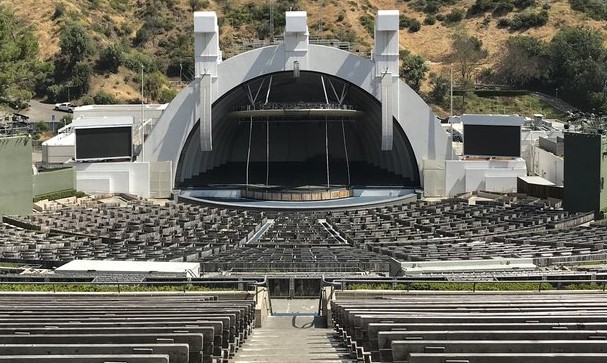 Two more Beatles recording sessions concerned "Everybody's Trying To Be My Baby" in the form of live concert appearances at the Hollywood Bowl in Los Angeles, California in 1965. Both of their concerts, August 29th (produced by Karl Enegmann and engineered by Hugh Davies) and August 30th (produced by Voyle Gilmore and engineered by Pete Abbott), were taped for possible release as a live album in that year, but this didn't transpire. A few of these songs did eventually make it onto the 1977 album "The Beatles At The Hollywood Bowl," but this song was not one of them. Two more Beatles recording sessions concerned "Everybody's Trying To Be My Baby" in the form of live concert appearances at the Hollywood Bowl in Los Angeles, California in 1965. Both of their concerts, August 29th (produced by Karl Enegmann and engineered by Hugh Davies) and August 30th (produced by Voyle Gilmore and engineered by Pete Abbott), were taped for possible release as a live album in that year, but this didn't transpire. A few of these songs did eventually make it onto the 1977 album "The Beatles At The Hollywood Bowl," but this song was not one of them.
 This changed, however, sometime in 2016. Giles Martin, George's son, acquired access to the August 30th, 1965 Hollywood Bowl performance of the song and produced an excellent version of it for inclusion on the remastered release of "Live At The Hollywood Bowl" released later that year. This changed, however, sometime in 2016. Giles Martin, George's son, acquired access to the August 30th, 1965 Hollywood Bowl performance of the song and produced an excellent version of it for inclusion on the remastered release of "Live At The Hollywood Bowl" released later that year.
Song Structure and Style
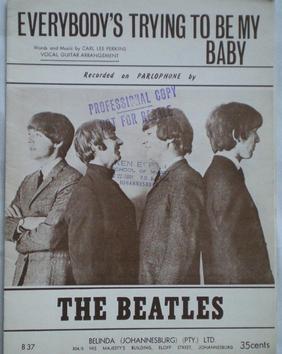 What we see here is probably the closest thing to a strict 12-bar blues pattern in the entire Beatles catalog. All of the elements of this song's structure can be considered a "verse" since they all contain the same chord pattern. The last eight measures of each verse may be considered by some as a "refrain" or "chorus," although the usual blues pattern indicates that the whole twelve measures should instead be thought of as an entire verse. There are some idiosyncrasies, though, the most mentionable being the three instrumental sections of the song. All in all, the pattern becomes 'verse/ verse/ instrumental/ verse/ instrumental/ instrumental/ verse/ verse' (or aababbaa). What we see here is probably the closest thing to a strict 12-bar blues pattern in the entire Beatles catalog. All of the elements of this song's structure can be considered a "verse" since they all contain the same chord pattern. The last eight measures of each verse may be considered by some as a "refrain" or "chorus," although the usual blues pattern indicates that the whole twelve measures should instead be thought of as an entire verse. There are some idiosyncrasies, though, the most mentionable being the three instrumental sections of the song. All in all, the pattern becomes 'verse/ verse/ instrumental/ verse/ instrumental/ instrumental/ verse/ verse' (or aababbaa).
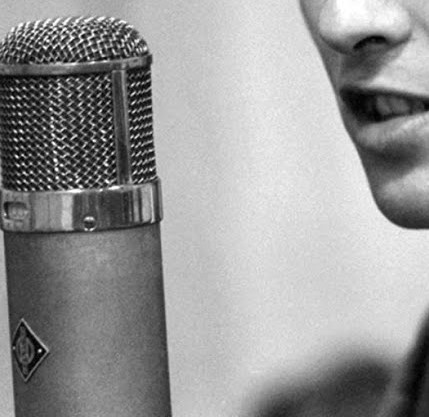 The first verse begins in an almost identical fashion to Carl Perkins classic "Blue Suede Shoes," with its "a cappella" introduction as well as the first two measures being six measures long, the only time in the song this occurs. The similarities between both of these songs don't stop there. Note the similar lyrical lines: "Well, it's one for the money" becomes "Well, they took some honey." This is followed by a three-note swing accent from the band (identical in both songs) with two additional beats of silence to allow for a breath to be taken by the singer. "Two for the show" becomes "from a tree" in this song, followed by another swing accent from the band and two more silent beats per measure. "Three to get ready now go, cat, go" becomes "dressed it up and they called it me," which then signals the band to jump in and complete the verse with a repetition of the title of the song (also not unlike "Blue Suede Shoes"). Since Carl Perkins' version of the song did not put these extra measures in the introduction, The Beatles apparently took it upon themselves to insert these "Blue Suede Shoes" features on their own in honor of the Carl Perkins style. The first verse begins in an almost identical fashion to Carl Perkins classic "Blue Suede Shoes," with its "a cappella" introduction as well as the first two measures being six measures long, the only time in the song this occurs. The similarities between both of these songs don't stop there. Note the similar lyrical lines: "Well, it's one for the money" becomes "Well, they took some honey." This is followed by a three-note swing accent from the band (identical in both songs) with two additional beats of silence to allow for a breath to be taken by the singer. "Two for the show" becomes "from a tree" in this song, followed by another swing accent from the band and two more silent beats per measure. "Three to get ready now go, cat, go" becomes "dressed it up and they called it me," which then signals the band to jump in and complete the verse with a repetition of the title of the song (also not unlike "Blue Suede Shoes"). Since Carl Perkins' version of the song did not put these extra measures in the introduction, The Beatles apparently took it upon themselves to insert these "Blue Suede Shoes" features on their own in honor of the Carl Perkins style.
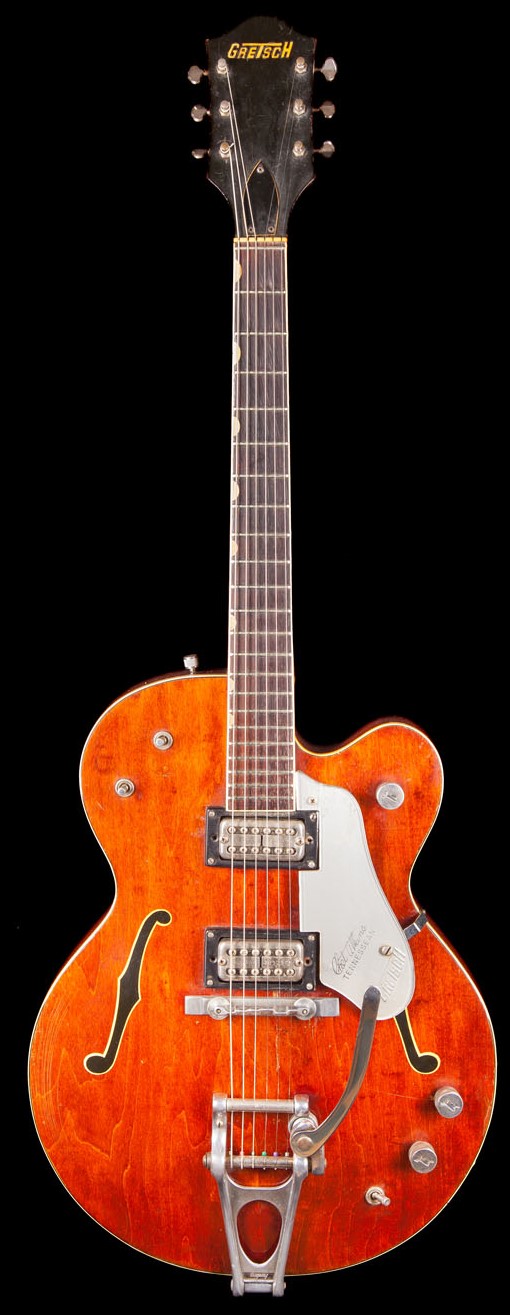 The second verse is very similar to the first, the only difference being that the first two measures are now four beats long just like the rest of the song. This is followed by the first instrumental section featuring excellent Carl Perkins-like guitar runs from George as heard in the original. All of the instrumental sections function as a strict 12-bar blues pattern, the accents of the verses dropped to allow focus on the guitar work. The second verse is very similar to the first, the only difference being that the first two measures are now four beats long just like the rest of the song. This is followed by the first instrumental section featuring excellent Carl Perkins-like guitar runs from George as heard in the original. All of the instrumental sections function as a strict 12-bar blues pattern, the accents of the verses dropped to allow focus on the guitar work.
A third verse then follows, which is identical to the first two except for different lyrics. Then two instrumental sections are heard back-to-back, the second reaching a climactic point in the opening measures. The third verse is then repeated (unlike the Carl Perkins version which repeats the second verse), and we then hear the first verse again with some subtle differences. First of all, the first two measures are only four-beats long this time around, and second of all, Harrison imitates Carl Perkins' rising note on the word "tree." The song appears to conclude at the end of the twelfth measure but, as a special Beatles surprise, they reprise the ending guitar riff which extends the verse by two full measures. The result is a suitable ending to another fine Beatles album.
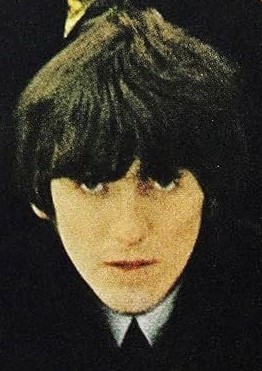 Musically, The Beatles incorporate the laid-back, ad-libbed rockabilly approach of the Carl Perkins classic and, while attempting to mimic the original, transform it into a tour-de-force as a fitting tribute to their idol. George Harrison is the unmistakable showpiece of the song, with his remarkable well-rehearsed guitar work and vivacious vocal delivery. He sings as if he really is experiencing what these lyrics relate, which he may actually be since The Beatles were in their height of adulation at the time. Musically, The Beatles incorporate the laid-back, ad-libbed rockabilly approach of the Carl Perkins classic and, while attempting to mimic the original, transform it into a tour-de-force as a fitting tribute to their idol. George Harrison is the unmistakable showpiece of the song, with his remarkable well-rehearsed guitar work and vivacious vocal delivery. He sings as if he really is experiencing what these lyrics relate, which he may actually be since The Beatles were in their height of adulation at the time.
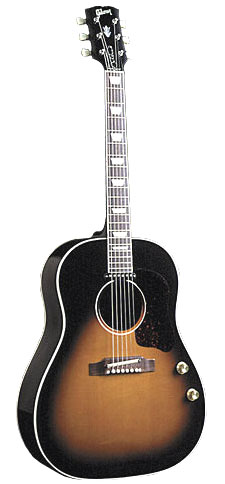 Lennon's comfortable choice of his Gibson J-160E acoustic guitar adds a suitable warmth to the mix, which would have sounded a bit more abrasive if he used his Rickenbacker. McCartney's walking bass drives the song along very nicely, as does Starr's cohesive drumming. Note the playful drum fill in the final extended measures, which depict the band as "having a ball" playing the song. Lennon's comfortable choice of his Gibson J-160E acoustic guitar adds a suitable warmth to the mix, which would have sounded a bit more abrasive if he used his Rickenbacker. McCartney's walking bass drives the song along very nicely, as does Starr's cohesive drumming. Note the playful drum fill in the final extended measures, which depict the band as "having a ball" playing the song.
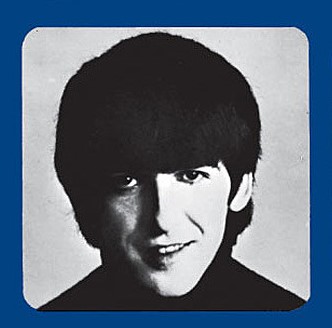 Although the lyrics are somewhat indecipherable at first listen (such as the word "honey" in the first verse and the phrase "fifty women" in the second), the somewhat narcissistic lyrics come across as humorous and clever. One can't help but have their tongue in their cheek while singing the song. Imagine having to deal with the problem of fifty adoring women at your door at 4:30 in the morning, or spreading yourself so thin that you end up having "nineteen dates" in one evening. I would like someone to explain to me, though, how you can take some "honey from a tree" and "dress it up" to look like George Harrison. Although the lyrics are somewhat indecipherable at first listen (such as the word "honey" in the first verse and the phrase "fifty women" in the second), the somewhat narcissistic lyrics come across as humorous and clever. One can't help but have their tongue in their cheek while singing the song. Imagine having to deal with the problem of fifty adoring women at your door at 4:30 in the morning, or spreading yourself so thin that you end up having "nineteen dates" in one evening. I would like someone to explain to me, though, how you can take some "honey from a tree" and "dress it up" to look like George Harrison.
American Releases
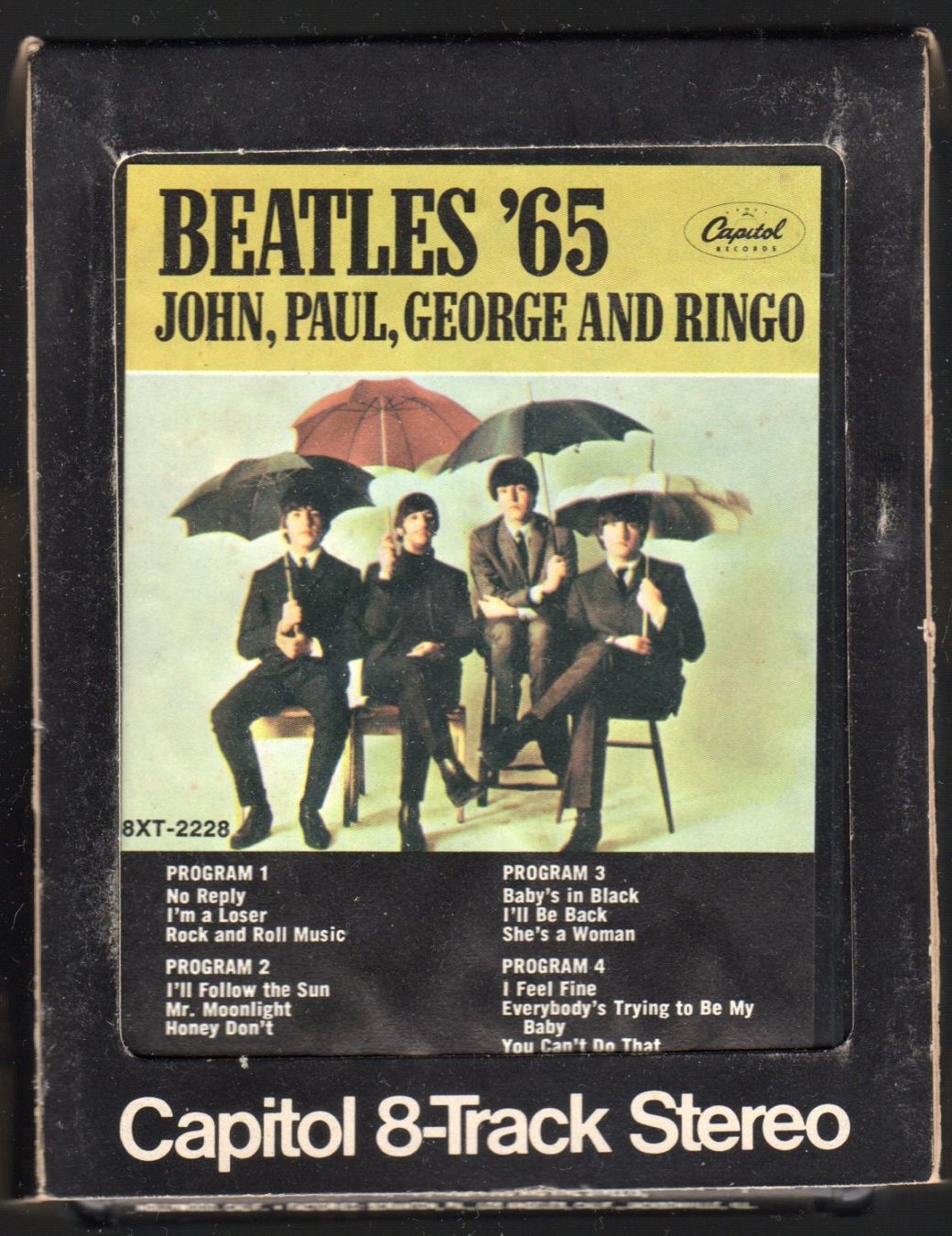 For being what most consider a minor Beatles title, "Everybody's Trying To Be My Baby" has had a good number of US releases. The first and main release of the song was on December 15th, 1964, on the Capitol album "Beatles '65." They wisely chose to follow the lead of the British "Beatles For Sale" album in having this track close the album. "Beatles '65" was then released on an individual compact disc on January 21st, 2014, both the mono and stereo versions of the original album contained on a single CD. For being what most consider a minor Beatles title, "Everybody's Trying To Be My Baby" has had a good number of US releases. The first and main release of the song was on December 15th, 1964, on the Capitol album "Beatles '65." They wisely chose to follow the lead of the British "Beatles For Sale" album in having this track close the album. "Beatles '65" was then released on an individual compact disc on January 21st, 2014, both the mono and stereo versions of the original album contained on a single CD.
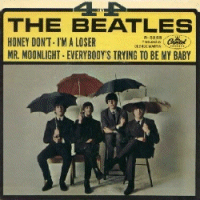 Capitol even thought enough of the song to include it in their second (and last) EP entitled "4-By The Beatles." Released on February 1st, 1965, it started off with the other similarly sounding Carl Perkins track "Honey Don't." With their next single "Eight Days A Week" being released only two weeks later, most record buyers concentrated on this never-before-heard song instead of an EP of already-available tracks. Therefore, this EP only peaked at #68 on the Billboard Hot 100. Capitol even thought enough of the song to include it in their second (and last) EP entitled "4-By The Beatles." Released on February 1st, 1965, it started off with the other similarly sounding Carl Perkins track "Honey Don't." With their next single "Eight Days A Week" being released only two weeks later, most record buyers concentrated on this never-before-heard song instead of an EP of already-available tracks. Therefore, this EP only peaked at #68 on the Billboard Hot 100.
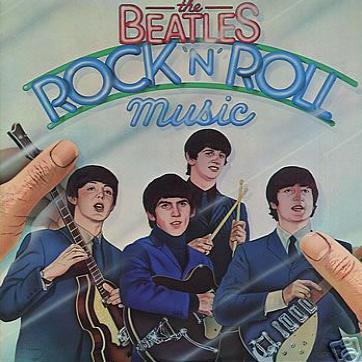 June 7th, 1976 was the next release of the song, on the Capitol double-album compilation "Rock 'n' Roll Music." This highly successful album (#2 on the Billboard album chart) focused primarily on the rockers in the earlier Beatle years, which was in harmony with the images depicted on the albums sleeve. George Martin was consulted regarding the preparation of this album and, with acceess to only the Capitol mixes, decided it was necessary to reverse the right and left channels of the original stereo mix of this song for this album, as well as decrease the treble of the overall mix. June 7th, 1976 was the next release of the song, on the Capitol double-album compilation "Rock 'n' Roll Music." This highly successful album (#2 on the Billboard album chart) focused primarily on the rockers in the earlier Beatle years, which was in harmony with the images depicted on the albums sleeve. George Martin was consulted regarding the preparation of this album and, with acceess to only the Capitol mixes, decided it was necessary to reverse the right and left channels of the original stereo mix of this song for this album, as well as decrease the treble of the overall mix.
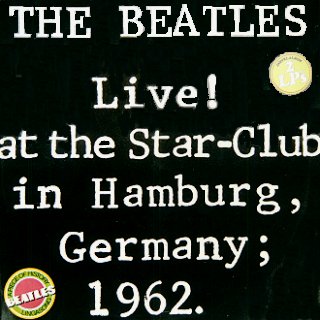 June 13th, 1977 saw a whole new version of the song released on the small Lingasong record label. "Live! at the Star Club in Hamburg, Germany; 1962" contained a rough recording of a live Beatles performance on December 31st, 1962 during their last Hamburg visit. The version of the song contained on this release was performed at a very rapid speed and contained four surprise endings, as opposed to only one as heard on The Beatles' studio recording. This was due to Ringo humorously extending the song continuously, which prompted the group to keep complying until they finally had enough. June 13th, 1977 saw a whole new version of the song released on the small Lingasong record label. "Live! at the Star Club in Hamburg, Germany; 1962" contained a rough recording of a live Beatles performance on December 31st, 1962 during their last Hamburg visit. The version of the song contained on this release was performed at a very rapid speed and contained four surprise endings, as opposed to only one as heard on The Beatles' studio recording. This was due to Ringo humorously extending the song continuously, which prompted the group to keep complying until they finally had enough.
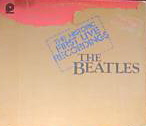 Pickwick Records then obtained the above tapes and attempted to clean them up for release, the first result being three 1978 single albums entitled "Recorded Live In Hamburg 1962." "Volume 2" of these three albums contained "Everybody's Trying To Be My Baby." Pickwick then divided up these songs into two seperate albums entitled "1st Live Recordings" in 1979, "Volume Two" featuring the same version of "Everybody's Trying To Be My Baby." Finally, the label combined both albums into a double-album release entitled "The Historic First Live Recordings" in 1980, this being quite hard to find today. Pickwick Records then obtained the above tapes and attempted to clean them up for release, the first result being three 1978 single albums entitled "Recorded Live In Hamburg 1962." "Volume 2" of these three albums contained "Everybody's Trying To Be My Baby." Pickwick then divided up these songs into two seperate albums entitled "1st Live Recordings" in 1979, "Volume Two" featuring the same version of "Everybody's Trying To Be My Baby." Finally, the label combined both albums into a double-album release entitled "The Historic First Live Recordings" in 1980, this being quite hard to find today.
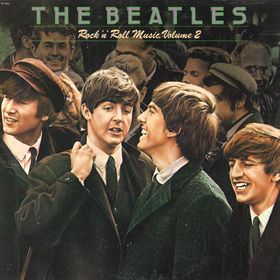 On October 27th, 1980, Capitol decided to re-release their "Rock 'n' Roll Music" album in two volumes for budget sales. "Everybody's Trying To Be My Baby" ended up being on the second volume, appropriately entitled "Rock 'n' Roll Music, Volume 2." On October 27th, 1980, Capitol decided to re-release their "Rock 'n' Roll Music" album in two volumes for budget sales. "Everybody's Trying To Be My Baby" ended up being on the second volume, appropriately entitled "Rock 'n' Roll Music, Volume 2."
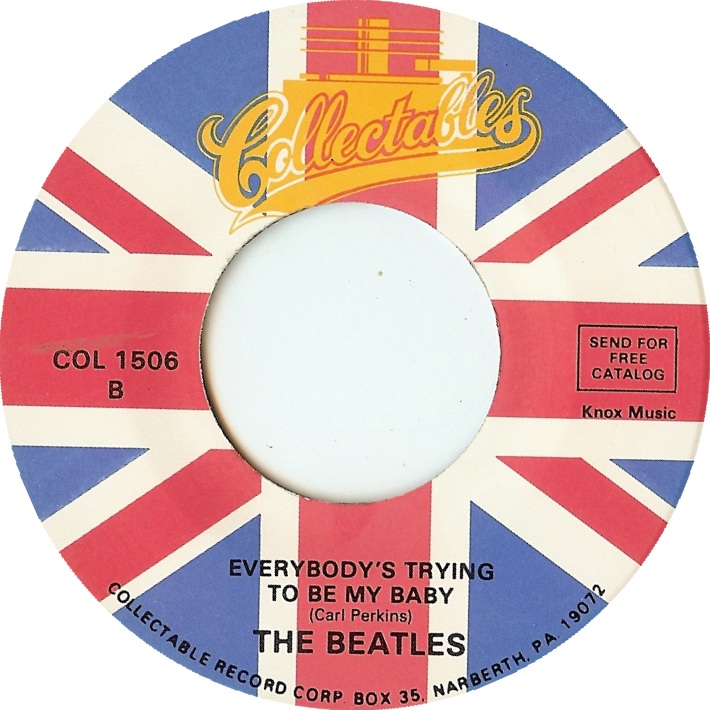 Two more official releases of the above Hamburg tapes came out in the early '80s. The first was on the Hall Of Music label, which was a double album called "Live - 1962 - Hamburg Germany," released in 1981. Then came the only single release of the song by The Beatles on the Collectables label in 1982, paired with "Till There Was You." Two more official releases of the above Hamburg tapes came out in the early '80s. The first was on the Hall Of Music label, which was a double album called "Live - 1962 - Hamburg Germany," released in 1981. Then came the only single release of the song by The Beatles on the Collectables label in 1982, paired with "Till There Was You."
The first time the original British "Beatles For Sale" album was made available in the US was the "Original Master Recording" vinyl edition released through Mobile Fidelity Sound Lab in February of 1987. This album included "Everybody's Trying To Be My Baby" and was prepared utilizing half-speed mastering technology from the original master tape on loan from EMI. This version of the album was only available for a short time and is quite collectible today.
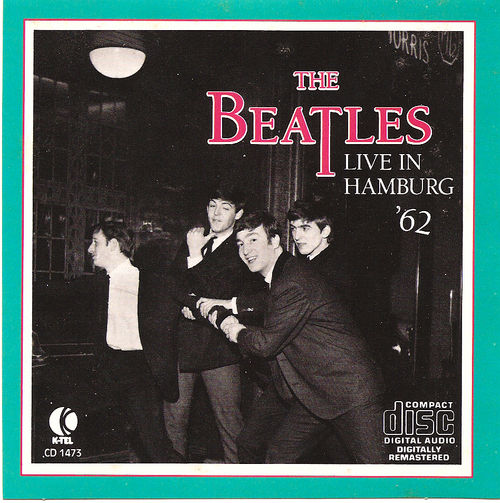 With the dawning of the compact disc era in the '80s, music fans were eagerly waiting for the delayed release of the Beatles catalog on CD. K-Tel Records thought to cash in on this expectation by releasing "Live In Hamburg '62" in early February 1987, which was just prior to the release of the first four Beatles albums by Apple Records. Many Beatles fans couldn't resist owning a live CD by their favorite group that featured 20 tracks including "Everybody's Trying To Be My Baby," not realizing that this was such a lo-fi rough recording as released many times before on vinyl, as detailed above. With the dawning of the compact disc era in the '80s, music fans were eagerly waiting for the delayed release of the Beatles catalog on CD. K-Tel Records thought to cash in on this expectation by releasing "Live In Hamburg '62" in early February 1987, which was just prior to the release of the first four Beatles albums by Apple Records. Many Beatles fans couldn't resist owning a live CD by their favorite group that featured 20 tracks including "Everybody's Trying To Be My Baby," not realizing that this was such a lo-fi rough recording as released many times before on vinyl, as detailed above.
The "Beatles For Sale" album was released on compact disc in the US on February 26th, 1987 and on vinyl on July 21st, 1987. While these releases were in mono a remastered stereo edition came out on CD on September 9th, 2009 and on vinyl on November 13th, 2012.
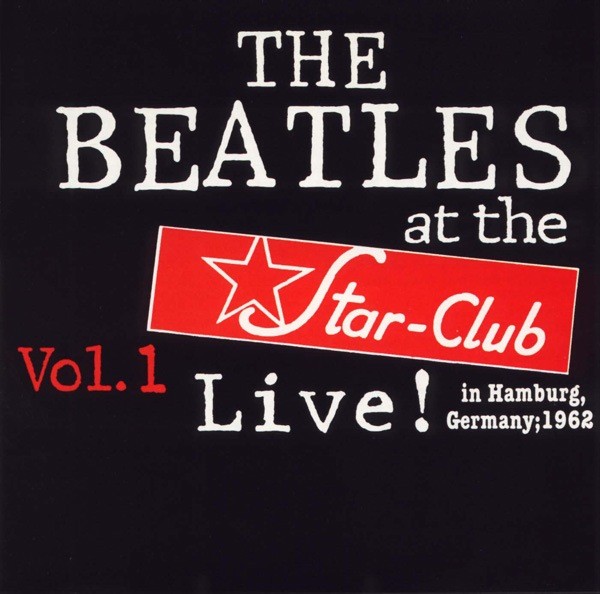 Sometime in 1991, Sony Music took it upon themselves to release two volumes of the above mentioned 1962 Hamburg recordings, "Live! At The Star Club In Hamburg, Germany; 1962 (Vol. 1)," which contained "Everybody's Trying To Be My Baby." The release of these volumes prompted legal action from The Beatles, Sony Music discontinuing production of these volumes because of a lawsuit that had been filed. By 1998, The Beatles had won the right of ownership of these recordings, any releases surfacing after this point being illegally produced bootlegs. Sometime in 1991, Sony Music took it upon themselves to release two volumes of the above mentioned 1962 Hamburg recordings, "Live! At The Star Club In Hamburg, Germany; 1962 (Vol. 1)," which contained "Everybody's Trying To Be My Baby." The release of these volumes prompted legal action from The Beatles, Sony Music discontinuing production of these volumes because of a lawsuit that had been filed. By 1998, The Beatles had won the right of ownership of these recordings, any releases surfacing after this point being illegally produced bootlegs.
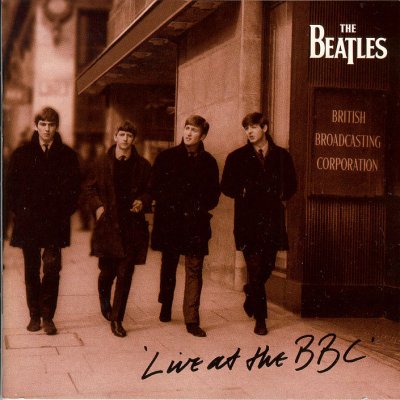 The '90s also brought two distinctive new versions of the song to light. "Live At The BBC," the highly anticipated Apple release on November 30th, 1994, contained the version of the song The Beatles recorded for the BBC radio show "Saturday Club" on November 25th, 1964 (aired on December 26th) in promotion of the newly released "Beatles For Sale" album. On November 11th, 2013, this album was remastered, re-packaged and re-released. The '90s also brought two distinctive new versions of the song to light. "Live At The BBC," the highly anticipated Apple release on November 30th, 1994, contained the version of the song The Beatles recorded for the BBC radio show "Saturday Club" on November 25th, 1964 (aired on December 26th) in promotion of the newly released "Beatles For Sale" album. On November 11th, 2013, this album was remastered, re-packaged and re-released.
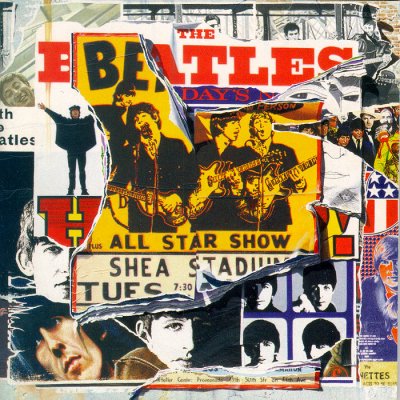 On March 18th, 1996, "Anthology 2" was released, which featured the live performance of the song as recorded at their historic August 15th, 1965 Shea Stadium concert in New York. Being that this recording did not make the cut for the television film "The Beatles At Shea Stadium," this live version was thought to be lost. It appears on this double-CD release while the filmed footage appears on the Anthology video release. On March 18th, 1996, "Anthology 2" was released, which featured the live performance of the song as recorded at their historic August 15th, 1965 Shea Stadium concert in New York. Being that this recording did not make the cut for the television film "The Beatles At Shea Stadium," this live version was thought to be lost. It appears on this double-CD release while the filmed footage appears on the Anthology video release.
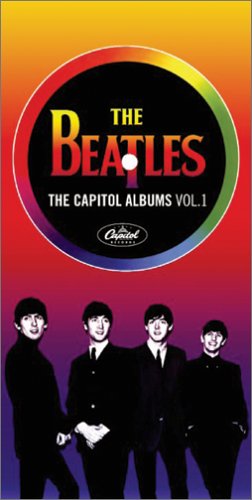 Before the remastered Beatles discs were released in 2009, Capitol answered the demand to hear the early Beatles catalog in stereo by releasing two box sets, the first one entitled "The Capitol Albums, Vol. 1." The stereo and mono versions of the first four Capitol Beatles albums were contained in this box set, including the "Beatles '65" album that originally featured "Everybody's Trying To Be My Baby." Before the remastered Beatles discs were released in 2009, Capitol answered the demand to hear the early Beatles catalog in stereo by releasing two box sets, the first one entitled "The Capitol Albums, Vol. 1." The stereo and mono versions of the first four Capitol Beatles albums were contained in this box set, including the "Beatles '65" album that originally featured "Everybody's Trying To Be My Baby."
September 9th, 2009 was the release date for the CD box set “The Beatles In Mono,” which contained a remastered version of the original mono mix of the song. The vinyl edition was first released on September 9th, 2014.
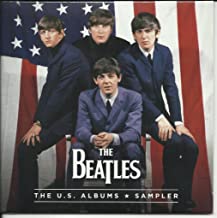 In promotion of the 2014 box set called "The US Albums," a 25-song sampler CD was manufactured for a limited release on January 21st, 2014, this containing the stereo mix of "Everybody's Trying To Be My Baby." In promotion of the 2014 box set called "The US Albums," a 25-song sampler CD was manufactured for a limited release on January 21st, 2014, this containing the stereo mix of "Everybody's Trying To Be My Baby."
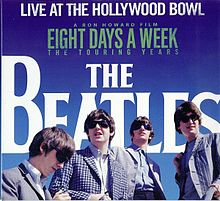 On September 9th, 2016, the highly-anticipated remastered version of "Live At The Hollywood Bowl" was released, which included the newly produced version of "Everybody's Trying To Be My Baby" as The Beatles performed it on August 30th, 1965 as a bonus track. On September 9th, 2016, the highly-anticipated remastered version of "Live At The Hollywood Bowl" was released, which included the newly produced version of "Everybody's Trying To Be My Baby" as The Beatles performed it on August 30th, 1965 as a bonus track.
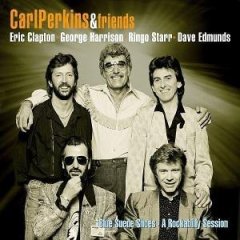 Not to be forgotten is George Harrison's performance of the song with Carl Perkins and a celebrity band for a 1985 British television special, which then was released on the album "Blue Suede Shoes: A Rockabilly Session" on June 6th, 2006. Not to be forgotten is George Harrison's performance of the song with Carl Perkins and a celebrity band for a 1985 British television special, which then was released on the album "Blue Suede Shoes: A Rockabilly Session" on June 6th, 2006.
Live Performances
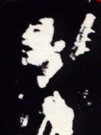 When The Beatles began their first residency in Hamburg, Germany in August of 1960, and with up to six hours of stage time per performance, they needed an increased plethora of material to perform, The Beatles had no choice but to work up all the music they were acquainted with, this including the entirety of one of John Lennon's favorite albums, "Teen Beat" by Carl Perkins. Lennon was quoted as saying that this album was one of "two great albums that I listened to all the way through when I was about sixteen...those are the only ones on which I really enjoyed every track." The other, understandably, was the first Elvis album. When The Beatles began their first residency in Hamburg, Germany in August of 1960, and with up to six hours of stage time per performance, they needed an increased plethora of material to perform, The Beatles had no choice but to work up all the music they were acquainted with, this including the entirety of one of John Lennon's favorite albums, "Teen Beat" by Carl Perkins. Lennon was quoted as saying that this album was one of "two great albums that I listened to all the way through when I was about sixteen...those are the only ones on which I really enjoyed every track." The other, understandably, was the first Elvis album.
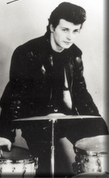 With Pete Best on drums, The Beatles gave the vocal duties to George and they continuted to include the song during their continued visits to Hamburg, as well as the Cavern Club in Liverpool and at every point in-between. They continued performing the song throughout 1962 as Ringo took over the drums, evidenced by the live performance available on many US releases from their final Hamburg dates in December of that year. With Pete Best on drums, The Beatles gave the vocal duties to George and they continuted to include the song during their continued visits to Hamburg, as well as the Cavern Club in Liverpool and at every point in-between. They continued performing the song throughout 1962 as Ringo took over the drums, evidenced by the live performance available on many US releases from their final Hamburg dates in December of that year.
 With the British tours of 1963 their set lists grew smaller, with less need of much previously performed material. Therefore, "Everybody's Trying To Be My Baby" took a back seat to other George Harrison vocal songs, such as the recently added Tommy Roe hit "Sheila." Nonetheless, they resurrected the song a couple of times for BBC radio broadcasts in May 1963 and March 1964, as detailed above under the heading "Recording History." With the British tours of 1963 their set lists grew smaller, with less need of much previously performed material. Therefore, "Everybody's Trying To Be My Baby" took a back seat to other George Harrison vocal songs, such as the recently added Tommy Roe hit "Sheila." Nonetheless, they resurrected the song a couple of times for BBC radio broadcasts in May 1963 and March 1964, as detailed above under the heading "Recording History."
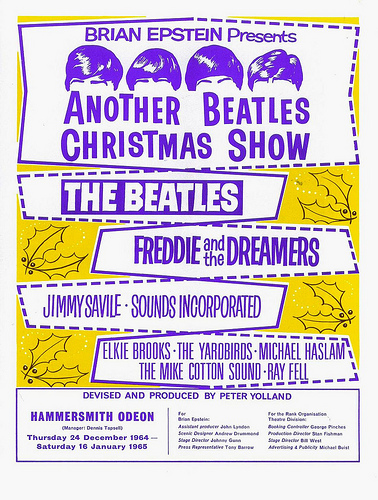 Since they decided to record it proper for their album "Beatles For Sale" in October of 1964, it was only natural for them to feature the song in their live act as a focal point for George. They ended 1964 performing the song in "Another Beatles Christmas Show," a Brian Epstein arranged 38-performance show that ran from December 24th, 1964 to January 16th, 1965. Since they decided to record it proper for their album "Beatles For Sale" in October of 1964, it was only natural for them to feature the song in their live act as a focal point for George. They ended 1964 performing the song in "Another Beatles Christmas Show," a Brian Epstein arranged 38-performance show that ran from December 24th, 1964 to January 16th, 1965.
Then on to touring. Their short European tour, starting on June 20th in Paris, continued the use of the song as George's vocal contribution. This first day on tour was broadcast live on television and recorded for radio broadcast in that country. The tour hit Italy and France before ending on July 3rd in Spain.
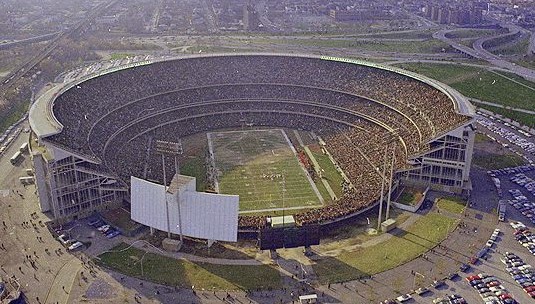 Their American tour of 1965 also featured the song. The first date of the tour was the legendary Shea Stadium concert on August 15th in New York City, the recording of which can be heard on the "Anthology 2" album. After stopping in various cities such as Atlanta, Houston, San Diego and two dates at the Hollywood Bowl in Los Angeles, the tour ended on August 31st at the Cow Palace in San Francisco. Their American tour of 1965 also featured the song. The first date of the tour was the legendary Shea Stadium concert on August 15th in New York City, the recording of which can be heard on the "Anthology 2" album. After stopping in various cities such as Atlanta, Houston, San Diego and two dates at the Hollywood Bowl in Los Angeles, the tour ended on August 31st at the Cow Palace in San Francisco.
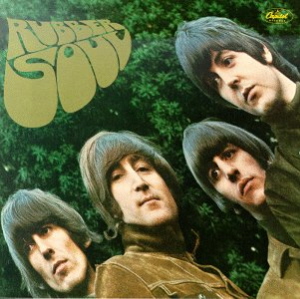 Shortly after their return from this tour, recording commenced for what became the "Rubber Soul" album. When they returned to touring thereafter, the newly recorded George Harrison composition "If I Needed Someone" became the new vocal feature for George, which forever retired "Everybody's Trying To Be My Baby" from The Beatles' set list. Shortly after their return from this tour, recording commenced for what became the "Rubber Soul" album. When they returned to touring thereafter, the newly recorded George Harrison composition "If I Needed Someone" became the new vocal feature for George, which forever retired "Everybody's Trying To Be My Baby" from The Beatles' set list.
Conclusion
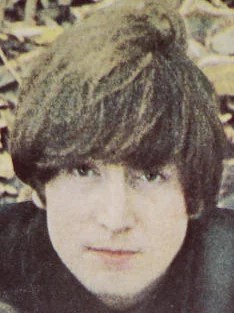 The fact has been established, even from the mouths of The Beatles themselves, that they just didn't have enough time to write a full album's worth of original material to fill their fourth British album "Beatles For Sale." "There was a lousy period when we didn't seem to have any material for the LP and didn't have a single," Lennon stated in interview back in late 1964. The fact has been established, even from the mouths of The Beatles themselves, that they just didn't have enough time to write a full album's worth of original material to fill their fourth British album "Beatles For Sale." "There was a lousy period when we didn't seem to have any material for the LP and didn't have a single," Lennon stated in interview back in late 1964.
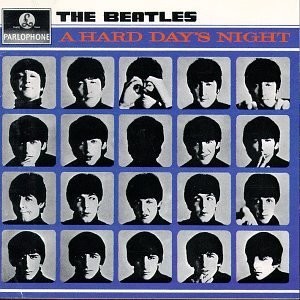 While they may not have been able to write all of the songs on the album as they had just previously done with "A Hard Day's Night," this enabled them to crank out some of their old-time favorites and have some fun with them. And they could also record them very quickly. "For this album we rehearsed only the new ones," explained George Harrison. "Songs like 'Honey Don't' and 'Everybody's Trying To Be My Baby,' we played live so often that we only had to get a sound on them and do them." While they may not have been able to write all of the songs on the album as they had just previously done with "A Hard Day's Night," this enabled them to crank out some of their old-time favorites and have some fun with them. And they could also record them very quickly. "For this album we rehearsed only the new ones," explained George Harrison. "Songs like 'Honey Don't' and 'Everybody's Trying To Be My Baby,' we played live so often that we only had to get a sound on them and do them."
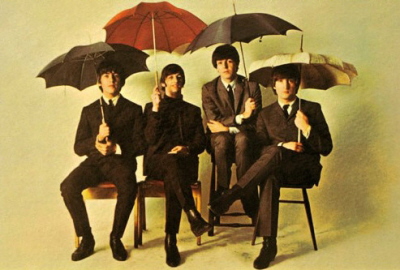 This resulted in some album tracks that brimmed over with spontaneity and excitement. Having to perform multiple takes of their new original material, not to mention the necessary overdubs, sometimes took many hours (or even days) in the recording studio, even at this early stage of their career. Their enthusiasm for the song may have waned by that point, which at times can be heard in the finished product. On the other hand, these cover songs, which were hand-picked by the group as their favorites, captured the essence of their formative live appearances of the Cavern / Hamburg days. On "Everybody's Trying To Be My Baby," you can actually hear The Beatles enjoying themselves. What could be a more fitting conclusion to an album than that? This resulted in some album tracks that brimmed over with spontaneity and excitement. Having to perform multiple takes of their new original material, not to mention the necessary overdubs, sometimes took many hours (or even days) in the recording studio, even at this early stage of their career. Their enthusiasm for the song may have waned by that point, which at times can be heard in the finished product. On the other hand, these cover songs, which were hand-picked by the group as their favorites, captured the essence of their formative live appearances of the Cavern / Hamburg days. On "Everybody's Trying To Be My Baby," you can actually hear The Beatles enjoying themselves. What could be a more fitting conclusion to an album than that?
Song Summary
"Everybody's Trying To Be My Baby"
Written by: Carl Perkins
Instrumentation (most likely):
- George Harrison - Lead Vocals, Lead Guitar (1963 Gretsch 6119 Tennessean)
- Paul McCartney - Bass Guitar (1963 Hofner 500/1)
- John Lennon - Rhythm Guitar (1964 Gibson J-160E)
- Ringo Starr - Drums (1964 Ludwig Super Classic Black Oyster Pearl), tambourine
Written and compiled by Dave Rybaczewski
|
IF YOU WOULD LIKE TO MAKE A DONATION TO KEEP THIS WEBSITE UP AND RUNNING, PLEASE CLICK BELOW!
|